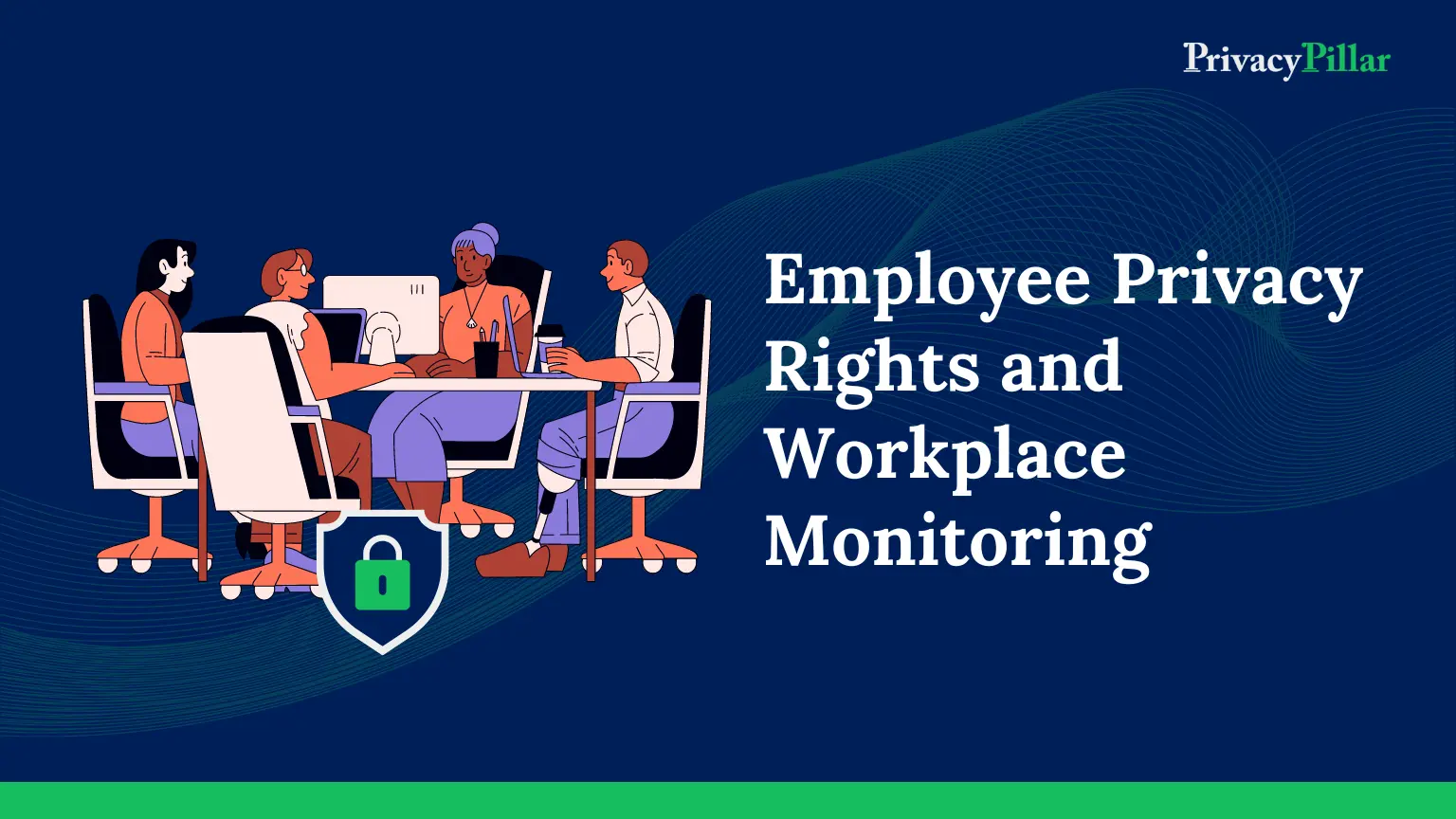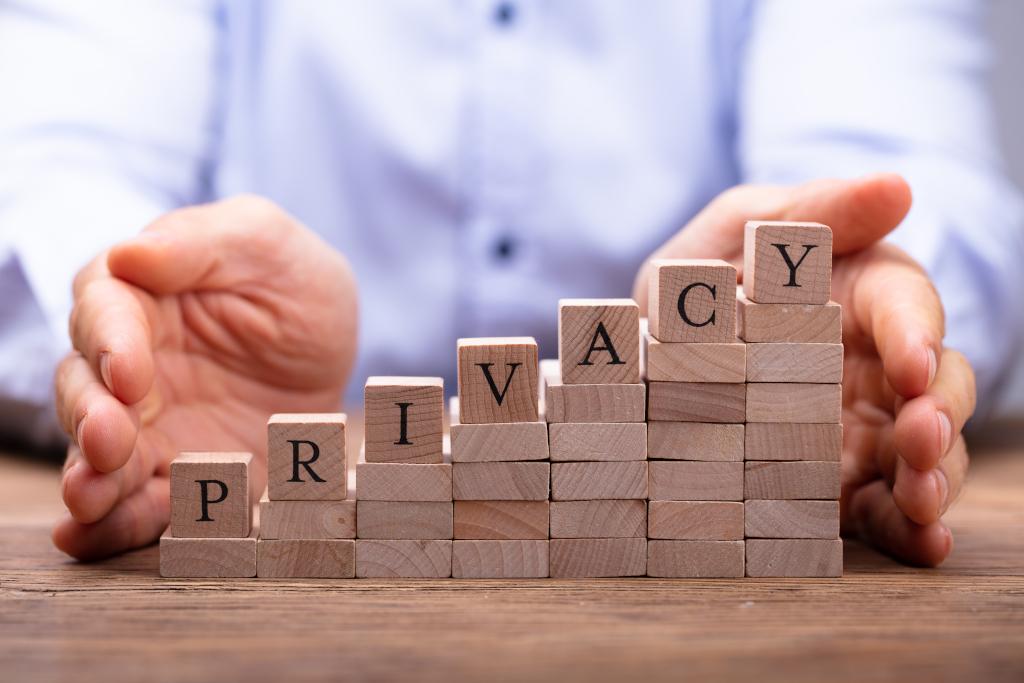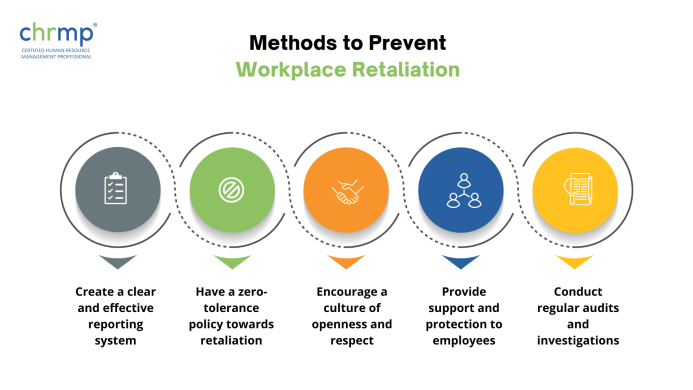
Employee Privacy Rights: Navigating Workplace Monitoring and Surveillance
In today’s fast-paced digital world, the lines between our personal and professional lives often blur. As technology advances, so do the ways employers can monitor their workforce, leading to a crucial question: What are your rights when it comes to privacy at work?
This comprehensive guide will demystify employee privacy rights regarding monitoring and surveillance. Whether you’re an employee concerned about your privacy or an employer seeking to understand legal boundaries, we’ll break down the essentials in easy-to-understand language.
Understanding the Modern Workplace Landscape
The modern workplace is a dynamic environment. While technology has brought incredible efficiencies, it has also opened doors for employers to keep a closer eye on their employees than ever before. From tracking emails to monitoring internet usage, and even using video surveillance, the tools available are vast.
This raises legitimate concerns about individual privacy, autonomy, and trust within the workplace. The key is to find a balance between an employer’s legitimate need to monitor for productivity, security, and legal compliance, and an employee’s right to a reasonable expectation of privacy.
Why Do Employers Monitor and Surveil?
Before diving into rights, it’s helpful to understand why employers engage in monitoring. Their reasons are often rooted in legitimate business interests, including:
- Productivity and Performance:
- Ensuring employees are focused on work-related tasks.
- Identifying areas where training or support might be needed.
- Measuring efficiency and output.
- Security and Data Protection:
- Protecting sensitive company data, trade secrets, and intellectual property.
- Preventing cyberattacks, data breaches, and unauthorized access.
- Detecting and investigating theft, fraud, or other illegal activities.
- Legal and Regulatory Compliance:
- Meeting industry-specific regulations (e.g., financial services, healthcare).
- Complying with legal discovery requests in lawsuits.
- Ensuring a safe working environment and preventing harassment or discrimination.
- Resource Management:
- Optimizing the use of company resources (e.g., internet bandwidth, phone lines).
- Managing time off and attendance.
- Quality Control and Customer Service:
- Monitoring customer interactions (e.g., recorded calls) to improve service.
- Ensuring adherence to company standards.
Types of Workplace Monitoring and Surveillance
Employers use a variety of methods to monitor their employees. These can be broadly categorized into digital and physical surveillance.
1. Digital Monitoring
This category covers almost anything done on a computer, network, or digital device.
- Email Monitoring:
- What it involves: Employers can read, store, and analyze emails sent and received using company email accounts. This includes the content of messages, attachments, and metadata (who, when, where).
- Why it’s done: To ensure professional communication, prevent data leaks, investigate misconduct, or comply with legal obligations.
- Internet Usage Monitoring:
- What it involves: Tracking websites visited, time spent on sites, downloads, and even search queries on company networks or devices.
- Why it’s done: To prevent access to inappropriate or unproductive content, conserve bandwidth, and protect against malware or phishing attempts.
- Software and Application Monitoring:
- What it involves: Tracking which applications are used, for how long, and sometimes even keystrokes or screenshots. This can include specialized "employee monitoring software."
- Why it’s done: To assess productivity, ensure compliance with software licenses, and prevent unauthorized software installations.
- Communication Tools (Slack, Microsoft Teams, etc.):
- What it involves: Monitoring messages, files shared, and interactions within company-provided communication platforms.
- Why it’s done: Similar to email, to ensure professional conduct, prevent harassment, and maintain records.
- Company Phone Monitoring:
- What it involves: Tracking call logs (numbers dialed, duration), and in some cases, recording conversations on company-issued phones.
- Why it’s done: For quality control, training, and to ensure appropriate use of company resources.
- GPS Tracking (Company Vehicles/Devices):
- What it involves: Using GPS technology in company vehicles or on company-issued mobile devices to track location, speed, and routes.
- Why it’s done: For logistics, safety, theft prevention, and ensuring employees are where they claim to be for work purposes.
2. Physical Surveillance
This involves monitoring an employee’s physical presence and actions.
- Video Surveillance (CCTV):
- What it involves: Using cameras to record activities in workplaces, common areas, or even specific workstations.
- Why it’s done: For security, theft prevention, monitoring safety protocols, and investigating incidents.
- Important Note: Generally not allowed in truly private areas like restrooms or changing rooms.
- Keycard/Biometric Entry Tracking:
- What it involves: Recording entry and exit times using access cards, fingerprints, or facial recognition.
- Why it’s done: For security, attendance tracking, and managing access to restricted areas.
- Drug and Alcohol Testing:
- What it involves: Requiring employees or job applicants to undergo tests for drug or alcohol use.
- Why it’s done: For safety-sensitive positions, post-accident investigations, or reasonable suspicion.
- Background Checks:
- What it involves: Investigating an applicant’s or employee’s criminal history, employment history, credit history, and sometimes even social media.
- Why it’s done: To assess suitability for a role, protect the company from risk, and ensure a safe work environment.
- Social Media Monitoring (External):
- What it involves: Reviewing public social media profiles of employees or applicants.
- Why it’s done: To assess professional reputation, identify potential risks, or investigate conduct that impacts the company’s image.
The Legal Landscape: Your Rights Explained
This is where it gets tricky, as employee privacy rights are not as straightforward as many believe. Unlike in some other countries, there is no overarching federal law in the United States that guarantees a comprehensive right to privacy for employees in the workplace.
Instead, employee privacy is governed by a patchwork of federal laws, state laws, and common law principles (decisions made by courts).
Key Principles to Understand:
- No Absolute Expectation of Privacy at Work: This is the most important concept. When you’re using company equipment or are on company property, your expectation of privacy is significantly reduced. Employers generally have more leeway to monitor activities that occur on their resources.
- "Reasonable Expectation of Privacy": This legal concept is crucial. A court will ask: Did the employee reasonably expect their activity to be private?
- Factors influencing "reasonable expectation":
- Notice: Did the employer inform employees about monitoring? If yes, the expectation of privacy is much lower.
- Company Policy: Is there a clear, written policy stating that certain activities are monitored?
- Location: Is the monitoring in a public area (e.g., office floor) vs. a private one (e.g., restroom)?
- Ownership of Equipment: Is it a company-issued device or a personal device?
- Factors influencing "reasonable expectation":
- Consent: In many cases, an employer’s right to monitor is strengthened if employees have given their consent, often implicitly by acknowledging and continuing to work under company policies that disclose monitoring.
- Legitimate Business Interest: Monitoring is more likely to be legal if the employer has a clear, justifiable business reason for doing it (e.g., preventing theft, ensuring productivity, protecting data).
- Intrusiveness: The method and extent of monitoring should ideally be proportionate to the legitimate business need. Highly intrusive monitoring without a strong justification is more likely to be challenged.
Relevant Laws (Simplified):
- Electronic Communications Privacy Act (ECPA) of 1986:
- This federal law primarily protects electronic communications (like email and phone calls) from unauthorized interception.
- However, it has two major exceptions for employers:
- "Business Use" Exception: Employers can monitor communications if they are using their own equipment in the ordinary course of business.
- "Consent" Exception: If one party to the communication (which can be the employer, or the employee through implied consent via policy acknowledgment) consents to the monitoring.
- Key takeaway: If you’re using company email or phones, your communications are generally NOT protected by ECPA from your employer’s monitoring.
- National Labor Relations Act (NLRA):
- This act protects employees’ rights to engage in "concerted activities" for mutual aid or protection (e.g., discussing wages, working conditions, unionizing).
- Monitoring that chills or interferes with these protected activities could be illegal, even if the monitoring itself is permissible.
- State Laws:
- Many states have their own laws that can offer more protection than federal law, especially regarding:
- "One-Party Consent" vs. "Two-Party Consent" for Recordings: Some states require only one person involved in a conversation to consent to it being recorded (e.g., the employer). Other states require all parties to consent. This is critical for phone call monitoring.
- Notice Requirements: Some states require employers to provide specific notice of monitoring.
- Off-Duty Conduct: Some states protect employees’ legal off-duty activities from employer monitoring or discipline.
- Specific Monitoring Types: Some states have laws addressing GPS tracking, social media privacy, or drug testing.
- Many states have their own laws that can offer more protection than federal law, especially regarding:
- General Data Protection Regulation (GDPR) – For International Companies:
- If your employer has operations in the European Union or handles data of EU citizens, GDPR applies.
- GDPR is much stricter on data privacy, requiring clear legal bases for processing data (including monitoring), transparency, data minimization, and strong employee rights (e.g., right to access, right to erasure). This is a complex area, but generally, EU employees have significantly stronger privacy rights.
Personal Devices vs. Company Devices: A Crucial Distinction
This is one of the most important factors determining your privacy rights:
- On Company-Issued Devices (Laptops, Phones, Tablets):
- Assumption: Assume no privacy. Your employer generally has the right to monitor almost anything you do on their equipment, including emails, internet usage, and stored files, especially if they have a policy stating they will.
- On Personal Devices (Your Own Phone, Laptop):
- Generally, more privacy: Employers have much less right to monitor your personal devices.
- Exceptions:
- BYOD (Bring Your Own Device) Policies: If you use your personal device for work, your employer might require you to install specific software that allows them to access certain work-related data or even remotely wipe the device. Read these policies very carefully.
- Social Media: While they can’t force access to private accounts, employers can view anything you post publicly. Your public posts can still lead to disciplinary action if they violate company policy or reflect poorly on the company.
What Employees Can Do to Protect Their Privacy
While complete privacy at work is largely a myth, you can take steps to protect yourself:
- Read and Understand Company Policies: This is your first and most important step. Your employee handbook or IT policy document should outline what the company monitors and how. If it’s vague, ask HR for clarification.
- Assume No Privacy on Company Systems: Use company emails, computers, and phones only for work-related activities. Do not conduct personal banking, send private messages, or store personal files on work equipment.
- Keep Work and Personal Separate:
- Use your personal phone for personal calls and texts.
- Use your personal email for personal communication.
- Access personal social media on your own devices, off the company network, during breaks or outside work hours.
- Be Mindful of Your Public Social Media Presence: Even if it’s your personal account, employers can view anything publicly accessible. Be aware that what you post can impact your professional reputation and employment.
- Understand Your State’s Laws: Research your state’s specific laws regarding workplace privacy, especially concerning recording conversations or off-duty conduct.
- If You Have Concerns: If you believe your privacy rights are being violated beyond what’s legally permissible or disclosed, consider:
- Speaking with HR (if you feel comfortable).
- Consulting with an attorney specializing in employment law.
- Contacting your state’s labor department.
What Employers Should Do: Best Practices for Ethical and Legal Monitoring
For employers, navigating privacy rights is crucial to maintain trust, avoid legal issues, and foster a positive work environment.
- Develop Clear, Comprehensive Policies:
- Written Policies: Have clear, written policies detailing what is monitored, why, and how.
- Employee Acknowledgement: Require employees to read and acknowledge these policies, ideally with a signature.
- Specifics: Address email, internet, phone, video, GPS, and BYOD usage specifically.
- Communicate Policies Effectively:
- Don’t just bury policies in a handbook. Discuss them during onboarding, in meetings, and send periodic reminders.
- Use simple, understandable language.
- Monitor Consistently and Fairly:
- Apply monitoring policies uniformly to all employees, avoiding discrimination.
- Ensure monitoring is for legitimate business purposes, not for personal curiosity or retaliation.
- Focus on Legitimate Business Needs:
- Only monitor what is truly necessary to achieve a specific, justifiable business objective. Avoid excessive or overly intrusive monitoring.
- Consider less intrusive alternatives where possible.
- Be Transparent:
- Inform employees about monitoring, rather than doing it secretly. This builds trust and reduces the "reasonable expectation of privacy."
- For video surveillance, post clear signage.
- For recorded calls, use automated announcements.
- Secure Collected Data:
- Implement robust security measures to protect any data collected through monitoring.
- Limit access to monitoring data only to authorized personnel.
- Comply with All Applicable Laws:
- Regularly review federal, state, and local laws related to privacy, especially if operating in multiple states or internationally.
- Be particularly mindful of "two-party consent" states for call recording.
- Seek Legal Counsel:
- Before implementing new monitoring technologies or policies, consult with an attorney specializing in employment law to ensure compliance and mitigate risks.
- Balance Trust and Oversight:
- While monitoring has its place, foster a culture of trust and empowerment. Overly intrusive monitoring can lead to low morale, decreased productivity, and high employee turnover.
The Balancing Act: Finding the Middle Ground
The core challenge of employee privacy in the age of surveillance is finding the right balance. Employers have a legitimate need to protect their assets, ensure productivity, and comply with laws. Employees, on the other hand, deserve a degree of privacy and autonomy, even in the workplace.
A transparent approach, where employers clearly communicate their monitoring practices and employees understand their rights and responsibilities, is the most effective way to navigate this complex landscape. By fostering open communication and mutual respect, workplaces can harness the benefits of technology without unduly infringing on individual privacy.
Conclusion
Employee privacy rights in the context of workplace monitoring and surveillance are complex and constantly evolving. While a complete expectation of privacy on company equipment is generally unrealistic, employees do have rights, particularly concerning personal devices and highly intrusive monitoring without proper justification or notice.
Both employees and employers benefit from a clear understanding of these rights and responsibilities. Employees should be proactive in understanding company policies and keeping work and personal activities separate. Employers, in turn, should prioritize transparency, develop clear and lawful policies, and only monitor when there is a legitimate business need. By doing so, workplaces can foster an environment of trust, productivity, and legal compliance in the digital age.
Disclaimer: This article provides general information and does not constitute legal advice. Workplace privacy laws vary significantly by jurisdiction and are subject to change. If you have specific concerns about your privacy rights or employer obligations, please consult with a qualified legal professional.



Post Comment